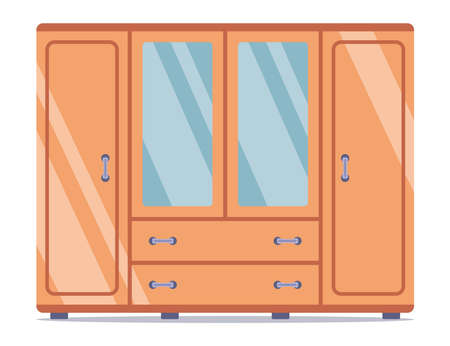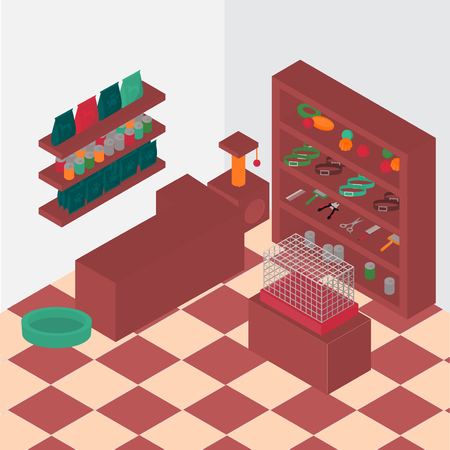Understanding Kitchen Lighting Needs in the UK
When it comes to kitchen lighting design in the UK, a nuanced understanding of local requirements is essential. The British climate, characterised by frequent overcast days and limited natural sunlight, means that artificial lighting plays a crucial role throughout much of the year. Typical UK homes, ranging from Victorian terraces to modern flats, often have unique architectural features such as bay windows, high ceilings, or compact layouts, all of which influence the approach to kitchen illumination. Effective kitchen lighting must strike a balance between functionality—ensuring safe and efficient meal preparation—and ambience, creating an inviting atmosphere for dining and entertaining. Below is an overview comparing key considerations for UK kitchen lighting:
| Consideration | UK Context |
|---|---|
| Natural Light Availability | Often limited due to weather and window size; reliance on layered artificial lighting |
| Architectural Styles | Diverse styles require tailored solutions; period properties may need sympathetic fixtures, while contemporary homes favour minimalist designs |
| Functionality vs Ambience | Task lighting is vital for work areas; ambient and accent lighting enhance comfort and aesthetics |
This foundation ensures that every kitchen lighting plan in the UK responds not only to practical needs but also enhances the overall living experience.
Types of Kitchen Lighting: Task, Ambient, and Accent
When designing kitchen lighting in the UK, it is crucial to understand the three primary lighting styles: task, ambient, and accent lighting. Each plays a distinct role in creating a functional yet inviting space, particularly within British homes where kitchens often serve as both culinary and social hubs. The following table outlines each type and examples of fixtures popular across the UK market:
| Lighting Type | Description | Popular UK Fixtures |
|---|---|---|
| Task Lighting | Focused illumination for specific work areas such as countertops, hobs, and sinks. Essential for food preparation and safety. | LED under-cabinet strips, recessed downlights, adjustable spotlights |
| Ambient Lighting | General background lighting that provides overall illumination and sets the mood in the kitchen. Vital for visibility and comfort. | Pendant lights over islands, flush ceiling fittings, integrated ceiling LED panels |
| Accent Lighting | Highlighting design features or decorative elements such as glass cabinets or artwork. Adds depth and personality to the space. | Plinth lights, cabinet uplighters, small wall sconces |
In British kitchens, a layered approach using all three types ensures both practicality and aesthetic appeal. For instance, adjustable spotlights are favoured for their flexibility in directing light precisely where needed during meal prep, while pendant lights are commonly chosen to add character above kitchen islands or dining tables. Accent lighting is increasingly utilised to showcase architectural details or prized dishware within glass-fronted cabinets—a trend embraced by many homeowners seeking a contemporary yet homely feel.

3. Efficiency and Sustainability: Energy-saving Solutions
In the UK, energy efficiency and sustainability are increasingly at the forefront of kitchen lighting design, driven by both environmental concerns and regulatory requirements. The adoption of energy-saving solutions not only reduces utility bills but also ensures compliance with standards such as Building Regulations Part L, which governs energy performance in residential properties.
LED Technology: The Preferred Choice
LED lighting has become the go-to option for modern British kitchens due to its superior efficiency, longevity, and low heat output. LEDs consume significantly less electricity compared to traditional incandescent or halogen bulbs, often using up to 80% less energy while delivering equal or better illumination. Their extended lifespan—often exceeding 25,000 hours—translates to fewer replacements and reduced waste, aligning with sustainability objectives.
Comparing Common Kitchen Lighting Options
| Lighting Type | Average Lifespan (hours) | Energy Consumption (Watts) | Typical Use in UK Kitchens |
|---|---|---|---|
| LED | 25,000+ | 5-15 | Main ceiling lights, under-cabinet strips |
| Halogen | 2,000 | 20-50 | Spotlights (being phased out) |
| Fluorescent | 10,000 | 15-30 | Tubular task lighting |
Regulatory Compliance and Local Initiatives
The UK government encourages homeowners to upgrade to efficient lighting through incentives and regulations. When planning a kitchen refurbishment or new installation, it is essential to select fixtures that are rated for low energy consumption and display the appropriate Energy Label. Moreover, integrating smart lighting controls—such as dimmers and occupancy sensors—further enhances efficiency by ensuring that lights operate only when necessary.
Sustainable Choices for a Greener Kitchen
By prioritising LED solutions and adhering to local guidelines on energy use, homeowners can create kitchens that are both functional and environmentally responsible. These measures not only support the UKs broader sustainability goals but also contribute to a comfortable and cost-effective living environment.
4. Incorporating British Design Trends
When it comes to kitchen lighting design in the UK, understanding and embracing the prevailing trends is essential for achieving a space that is both practical and aesthetically pleasing. British kitchens often blend contemporary minimalism with classic influences, creating diverse opportunities for illumination solutions that cater to different tastes and requirements. Below, we discuss the most notable trends shaping kitchen lighting across the UK:
Minimalist Lighting Schemes
Minimalism continues to be a dominant trend in modern British homes. Clean lines, concealed fixtures, and neutral finishes are favoured for their understated elegance and ability to create a clutter-free environment. Integrated LED strips beneath cabinets or within shelving units provide functional task lighting while maintaining a sleek appearance.
Traditional Touches
On the other end of the spectrum, many homeowners opt for lighting fixtures that reference traditional British design elements. This includes pendant lights with glass or metal shades, industrial-inspired fittings, and classic chandeliers over kitchen islands or dining spaces. Such choices add character and warmth, complementing period properties or those seeking a timeless feel.
Current Kitchen Lighting Trends Comparison
| Trend | Description | Best Suited For |
|---|---|---|
| Minimalist LEDs | Sleek, built-in fixtures offering energy efficiency and subtle illumination | Contemporary and open-plan kitchens |
| Statement Pendants | Bold overhead lights acting as focal points above islands or tables | Modern and eclectic interiors |
| Vintage/Industrial Styles | Metal finishes, exposed bulbs, and retro designs | Traditional homes or urban lofts |
| Layered Lighting | A combination of ambient, task, and accent lights for versatility | Kitchens of any style seeking adaptability |
| Dimmable Controls | Lighting systems with adjustable brightness for mood setting | Multi-functional kitchen-diners or open spaces |
Balancing Form and Functionality in British Homes
The key to successful kitchen lighting design in the UK lies in harmonising form with function. Whether opting for minimalist downlights or ornate pendants, it is crucial to ensure adequate illumination for daily tasks while also reflecting personal style preferences. Staying informed about current trends allows homeowners to create inviting spaces that not only meet practical needs but also celebrate distinctively British aesthetics.
5. Smart Lighting and Control Options
In contemporary British homes, integrating smart lighting systems has become increasingly popular, offering both convenience and energy efficiency. Smart home technology enables homeowners to tailor kitchen lighting to their specific needs, ensuring both functional and ambient illumination at any time of day. These systems not only enhance the cooking experience but also contribute to a comfortable and inviting atmosphere for entertaining guests or enjoying family meals.
Overview of Smart Home Integration
Many UK households are now adopting integrated smart home platforms—such as Google Home, Amazon Alexa, and Apple HomeKit—to control their kitchen lighting. These platforms allow users to operate lights remotely via smartphones or voice commands, set automated schedules, and adjust brightness or colour temperature with ease. Such flexibility is especially valued in open-plan kitchens and multifunctional living spaces commonly found across the UK.
Popular Control Methods in Modern British Kitchens
| Control Method | Main Features | Benefits for UK Households |
|---|---|---|
| Dimmer Switches | Manual or remote adjustment of light intensity | Energy savings, mood setting, compliance with British wiring standards |
| Smart Bulbs | Wi-Fi/Bluetooth enabled, controllable via apps/voice assistants | Customisable lighting scenes, easy retrofitting without rewiring |
| Motion Sensors | Automatic activation based on movement | Improved safety during night-time kitchen use, reduced electricity wastage |
Adoption Trends in the UK Market
The uptake of smart lighting solutions in the UK is driven by a growing awareness of sustainability and the desire for adaptable living spaces. Leading brands offer products that are compatible with the 230V mains supply typical in British homes and meet local safety regulations. As a result, both new builds and renovation projects frequently incorporate these technologies to future-proof kitchens.
Legal Considerations for Installation
When installing smart lighting controls in UK kitchens, it is essential to ensure compliance with Part P of the Building Regulations concerning electrical safety. For more complex integrations—such as centralised control systems or networked devices—consulting a qualified electrician registered with NICEIC or another recognised body is strongly recommended. This approach ensures that all installations are safe, legal, and tailored to the unique requirements of modern British kitchens.
6. Practical Design Tips for Everyday Use
When designing kitchen lighting in the UK, it is essential to strike a balance between visual appeal and everyday functionality. Homeowners often seek solutions that are both stylish and practical, especially as kitchens increasingly serve as social hubs and multifunctional spaces. Below are actionable tips, supported by real-life examples from British homes, to help achieve optimal illumination without compromising on aesthetics.
Consider Layered Lighting Solutions
Layering different types of lighting—ambient, task, and accent—ensures your kitchen remains both inviting and practical throughout the day. For example, a London townhouse may feature recessed ceiling lights for general illumination, under-cabinet LEDs for food prep areas, and pendant lamps above an island for added character. This approach not only enhances visibility but also allows flexibility in creating various moods.
Choose Fixtures Suited to UK Homes
Given the prevalence of period properties and compact spaces in the UK, selecting appropriately scaled fixtures is vital. Opt for low-profile LED panels or track lighting in narrow galley kitchens typical of Victorian terraces. In contrast, larger open-plan kitchens found in modern developments can accommodate statement pendants or chandeliers without overwhelming the space.
Popular Fixture Types and Their Best Uses
| Fixture Type | Best For | Example Setting |
|---|---|---|
| Pendant Lights | Task & Accent Lighting | Above kitchen islands in family homes |
| Under-Cabinet LEDs | Task Lighting | Beneath wall units in traditional terraced houses |
| Recessed Downlights | Ambient Lighting | Ceilings in contemporary flats |
Select Warm Colour Temperatures
The UKs natural light levels can be inconsistent due to weather variations. Choose bulbs with a warm white colour temperature (2700K–3000K) to create a cosy and welcoming environment, especially during long winter evenings. Many homeowners in Manchester opt for dimmable LEDs to adjust brightness according to time of day and activity.
Maintenance and Energy Efficiency Considerations
- Choose fixtures with easy-to-clean finishes such as brushed chrome or matte black, suitable for busy family kitchens.
- Opt for energy-efficient bulbs rated A+ or above to reduce electricity costs—a key concern among eco-conscious UK households.
Final Advice: Adaptability Is Key
The most successful kitchen lighting schemes allow for adaptation over time. Install separate circuits or smart controls so you can independently operate task and ambient lights. By considering these practical tips and referencing real-life examples from UK kitchens, homeowners can confidently design a lighting plan that enhances daily living while maintaining an elegant British style.


